Mother Nature has a wild imagination when it comes to fruit design. While apples and oranges might seem ordinary, our planet grows some truly bizarre fruits that look like they were plucked from alien worlds. From spiky exteriors to tentacle-like projections, these strange fruits challenge our expectations of what food should look like. Get ready to explore Earth’s most otherworldly fruits that might make you question which planet you’re actually on!
1. Buddha’s Hand
Imagine a lemon having a bad hair day, then growing finger-like appendages reaching in all directions. That’s Buddha’s Hand for you! This ancient citrus fruit resembles a yellow octopus or a hand with twisted fingers.
Unlike normal lemons, Buddha’s Hand contains no pulp or juice – it’s all rind and pith, but without the bitterness. The fragrance is intensely lemony and sweet, making it popular for perfuming rooms and flavoring dishes.
In China and Japan, it symbolizes happiness and longevity, often presented as a religious offering. The weird fingers can grow up to 12 inches long, creating a fruit that looks more like a prop from a sci-fi movie than something edible!
2. Horned Melon
The horned melon looks like it crash-landed from a distant galaxy. Covered in sharp, conical spikes and sporting a bright orange exterior, this fruit screams ‘don’t touch me!’ But slice it open, and you’ll discover an even more alien sight – lime-green jelly filled with edible seeds.
Native to Africa but now grown worldwide, the horned melon (also called kiwano) tastes like a mix of cucumber, banana, and lime. The texture is uniquely slimy yet refreshing.
Fun fact: This extraterrestrial-looking fruit actually starred as an alien prop in an episode of Star Trek! Its drought resistance makes it particularly valuable in harsh climates where other fruits struggle to grow.
3. Red Rambutan
From a distance, a pile of rambutans might be mistaken for a collection of small, fuzzy sea creatures. These golf ball-sized fruits are covered in soft, hair-like spines that can be red, yellow, or orange, giving them an appearance that’s more deep-sea exploration than farmers market.
Native to Southeast Asia, rambutan means ‘hairy’ in Malay – an apt description for this peculiar fruit. Crack open the hairy exterior, and you’ll find sweet, translucent flesh surrounding a single seed.
The taste resembles a grape with hints of strawberry and vanilla. Despite its intimidating appearance, harvesting rambutan requires no special equipment – the soft spines are flexible and harmless, unlike the threatening alien appearance suggests!
4. Dragon Fruit
Dragon fruit looks like it was designed by an alien artist with a flair for the dramatic. Its hot pink or yellow exterior comes adorned with green, scale-like leaves that curl outward like flames. The dramatic contrast makes it look like something that hatched from a dragon’s egg.
Slice it open to reveal an even more surprising interior – white or magenta flesh speckled with tiny black seeds, resembling a cosmic night sky. The flavor is subtly sweet, similar to a kiwi crossed with a pear.
Originally from Central America, dragon fruit (pitaya) grows on a type of cactus that blooms only at night. The flowers are so spectacular they’re called ‘Queen of the Night,’ adding to the fruit’s mystical, otherworldly reputation.
5. Durian Fruit
Behold the durian – a fruit so bizarre it’s banned in many public places not for its looks but for its infamous smell! Resembling a medieval weapon from Mars, this large, heavy fruit is covered in a formidable armor of sharp, thick spikes that can actually draw blood if mishandled.
Known as the ‘King of Fruits’ in Southeast Asia, durian’s outer shell protects a creamy, custard-like interior with a flavor complex enough to inspire passionate devotion despite its notorious odor (often compared to gym socks and rotting onions).
The smell is so potent that Singapore’s public transportation system famously prohibits carrying durian. Despite this social handicap, durian contains more nutrients than almost any other fruit – perhaps its evolutionary compensation for being so offensively pungent!
6. Ackee Fruit
The national fruit of Jamaica looks like it could be housing alien embryos. When ripe, ackee splits open into sections resembling a bizarre red and yellow mouth, revealing glossy black seeds nestled in soft yellow flesh. The opened fruit bears an uncanny resemblance to scrambled eggs.
Here’s where it gets truly alien – ackee is actually poisonous when unripe! The unripe fruit contains hypoglycin, which can cause severe vomiting and even death. Only the yellow arils (when the fruit opens naturally) are safe to eat.
When properly prepared, ackee has a mild, nutty flavor and buttery texture that pairs perfectly with saltfish in Jamaica’s national dish. Its unusual appearance and potentially deadly nature make it one of the strangest edible substances on our planet.
7. Jabuticaba
Imagine walking through a forest and seeing trees with trunks covered in dark purple spheres – not hanging from branches, but growing directly from the bark! That’s the bizarre reality of jabuticaba, a Brazilian fruit that defies conventional growing patterns.
The grape-sized fruits emerge directly from the trunk and main branches, making the tree look like it’s been bejeweled with dark, glossy orbs. This cauliflory (stem flowering) is rare among plants and gives jabuticaba trees an appearance straight out of a fantasy world.
The thick-skinned purple-black fruits contain sweet, gelatinous white pulp with a flavor reminiscent of grapes with hints of earthiness. Fresh jabuticaba has an extremely short shelf life of just 3-4 days, making this otherworldly fruit a rare treat outside its native Brazil.
8. Snake Fruit
Pick up a salak fruit and you might think you’re holding a piece of an alien reptile. Also known as snake fruit, its reddish-brown skin is covered in perfectly arranged scales that look eerily similar to snake skin. The resemblance is so striking that first-time handlers often approach with caution!
Native to Indonesia and Malaysia, salak grows in clusters at the base of palm trees. Peel back the scaly exterior and you’ll find three lobes of yellowish-white flesh with a texture similar to garlic cloves.
The taste is a surprising combination of sweet and acidic – like a pineapple crossed with an apple. Each fruit contains inedible brown seeds that add to its alien appearance. In Bali, a special variety called salak Bali is considered sweeter and more aromatic than its relatives.
9. Swiss Cheese Fruit
Monstera deliciosa fruit looks like it survived an alien attack. This elongated, cone-shaped fruit is covered in hexagonal scales that eventually peel back as it ripens, revealing creamy white flesh underneath. Most strikingly, as it matures, sections of the fruit fall off naturally, creating holes that give it its nickname – Swiss cheese fruit.
Patience is required with this strange specimen. When unripe, it contains calcium oxalate crystals that can cause intense irritation to the mouth and throat. Only when fully ripe (taking up to a year!) is it safe to consume.
The reward for waiting? A flavor profile that’s been described as a mix of banana, pineapple, and mango – hence another name, ‘fruit salad plant.’ In Mexico, where it’s called ‘piñanona,’ the ripening process is accelerated by wrapping the fruit in paper.
10. Noni
The noni fruit might win the award for ‘most alien-looking fruit with the worst smell.’ This lumpy, potato-sized fruit starts pale green before ripening to a yellowish-white, with a surface covered in irregular bumps and nodules that make it look like a misshapen alien egg.
The smell is what truly sets noni apart – so pungent and unpleasant that it’s earned the unfortunate nickname ‘vomit fruit’ or ‘cheese fruit.’ Despite its offensive odor, noni has been used medicinally throughout Polynesia for over 2,000 years.
The taste matches the smell – bitter and unpalatable to most – yet health enthusiasts worldwide consume noni juice for its purported benefits. Ancient Polynesians called it the ‘painkiller tree,’ using every part from roots to seeds for various remedies, proving that even the strangest fruits can have extraordinary properties.
11. Cupuaçu
Resembling a fuzzy, brown football from another dimension, cupuaçu grows in the Amazon rainforest and belongs to the same family as cacao. This heavyweight fruit can grow up to 9 inches long and is covered in a thick, velvety brown exterior that looks like it might be hiding alien secrets.
Crack open the hard shell and you’ll discover something truly otherworldly – creamy, fragrant white pulp surrounding large seeds. The aroma is a complex blend of chocolate, pineapple, and something uniquely earthy that’s difficult to describe.
Indigenous Amazonians have treasured cupuaçu for centuries, using it for food, beverages, and medicine. The pulp makes delicious juices, ice creams, and desserts, while the butter extracted from the seeds rivals cocoa butter for chocolate-making and cosmetics. Its high antioxidant content has earned it ‘superfood’ status.
12. Baobab Fruit
Hanging from the iconic ‘upside-down tree’ of Africa, baobab fruit looks like something designed by extraterrestrials. The large, woody, oval-shaped pods are covered in velvety hairs, resembling coconuts wearing fuzzy brown sweaters.
Crack open the nearly impenetrable shell, and you’ll find something even stranger – white, chalky pulp surrounding hard seeds. Unlike most fruits that are juicy and soft, baobab pulp is naturally dry and powdery, with a tart flavor similar to citrus mixed with vanilla.
Known as ‘monkey bread,’ this peculiar fruit contains six times more vitamin C than oranges and twice as much calcium as milk. African communities have relied on baobab for millennia – not just for food but for medicine and materials. The pulp becomes shelf-stable naturally, requiring no preservation, making it a perfect food source in harsh climates.
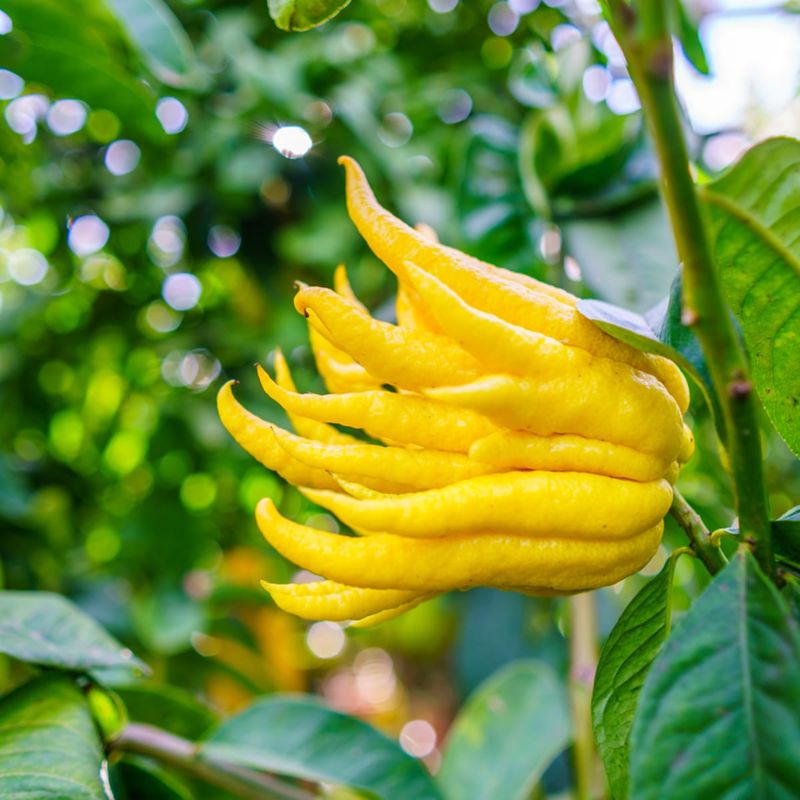
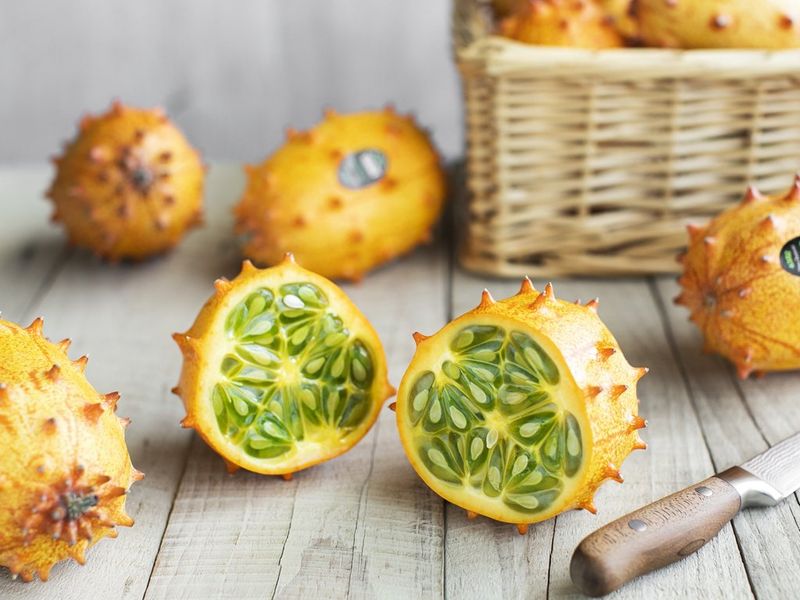
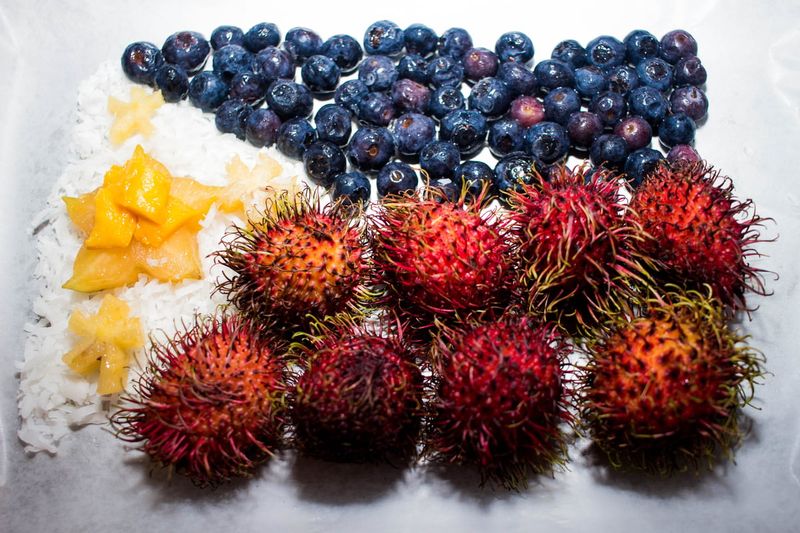
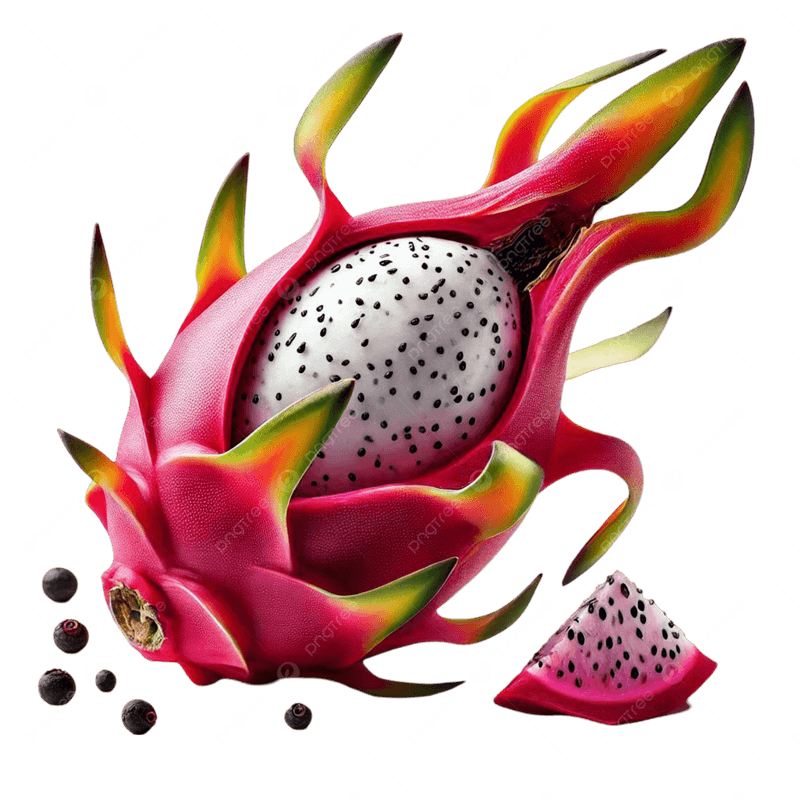
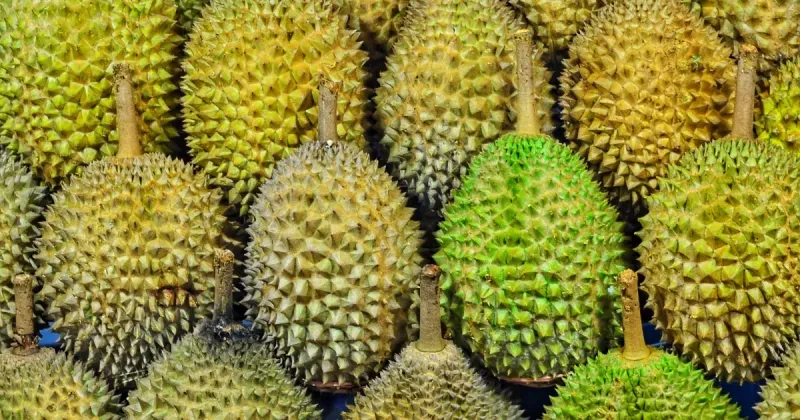
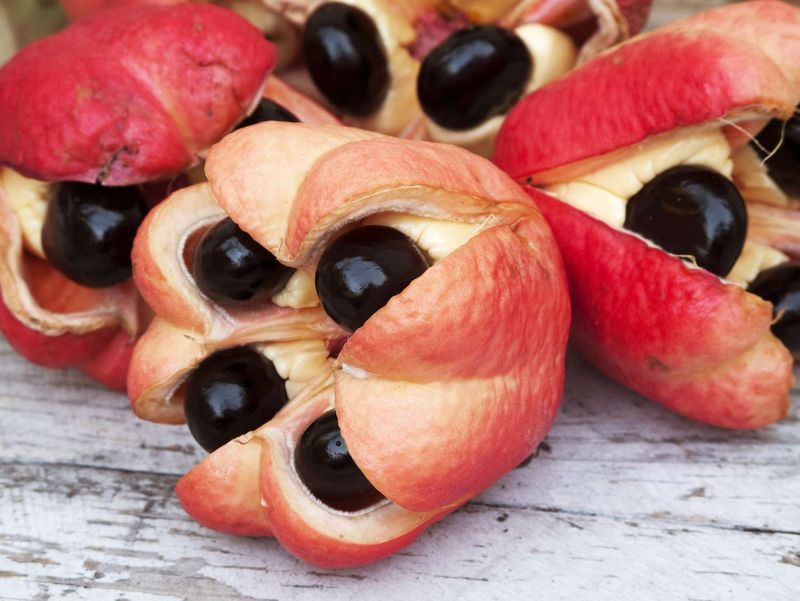
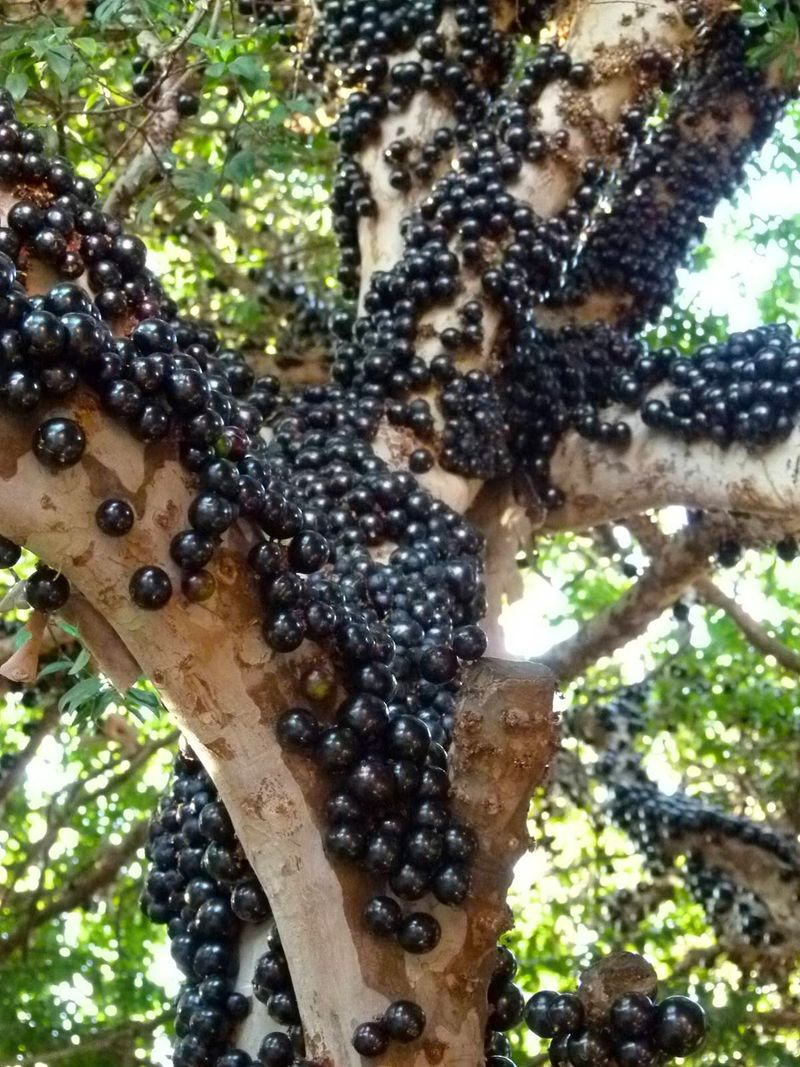
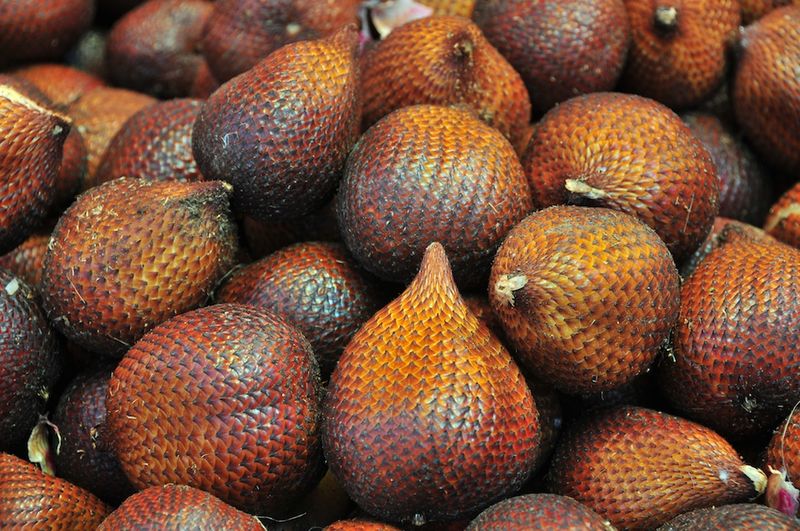
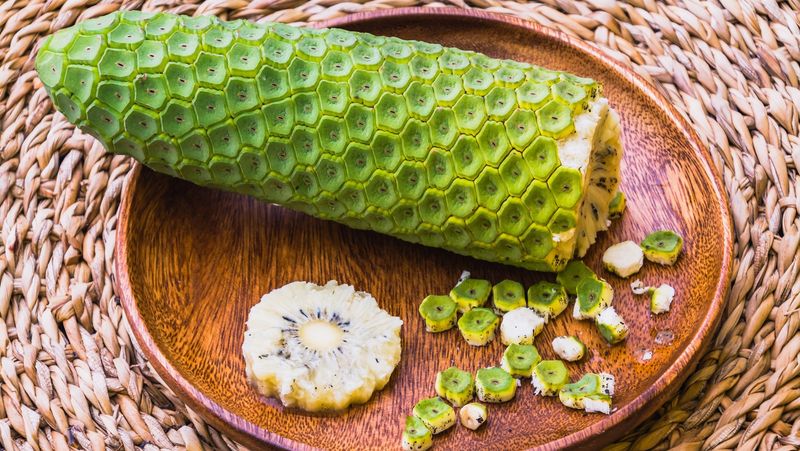
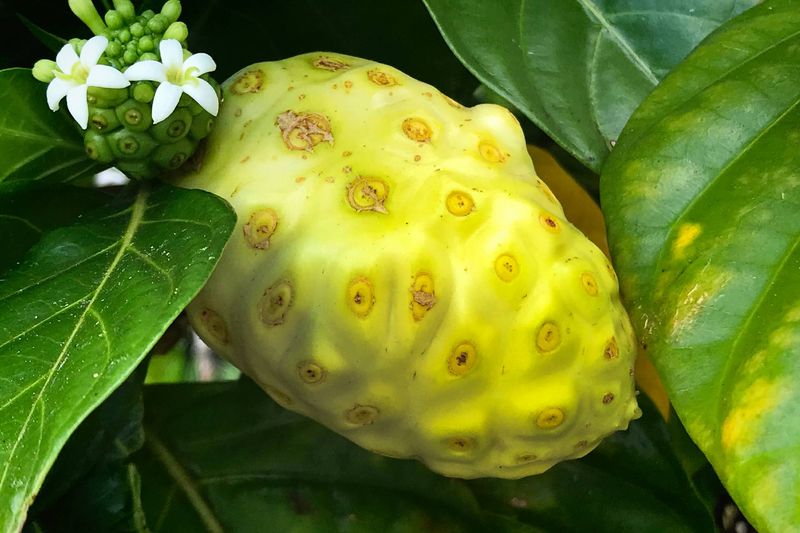
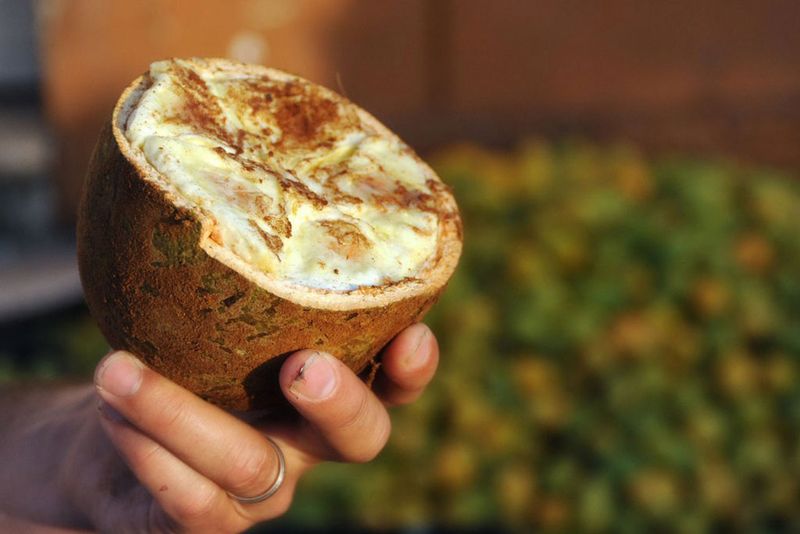
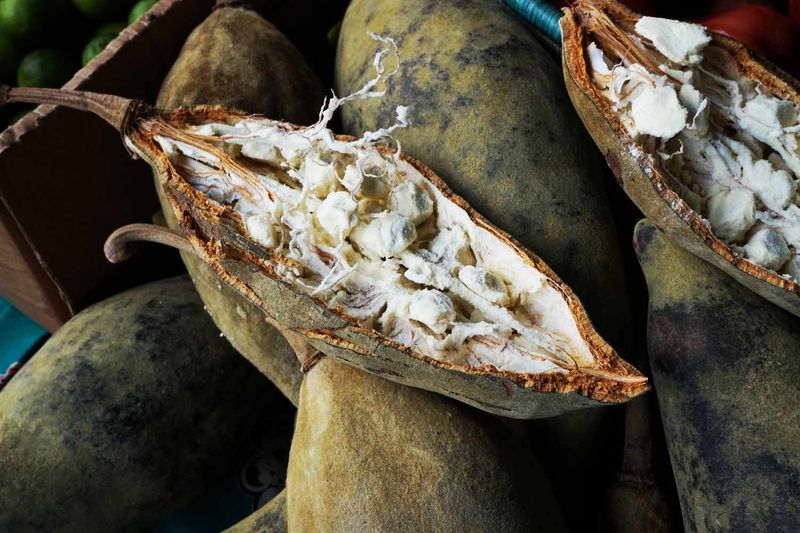
Leave a comment